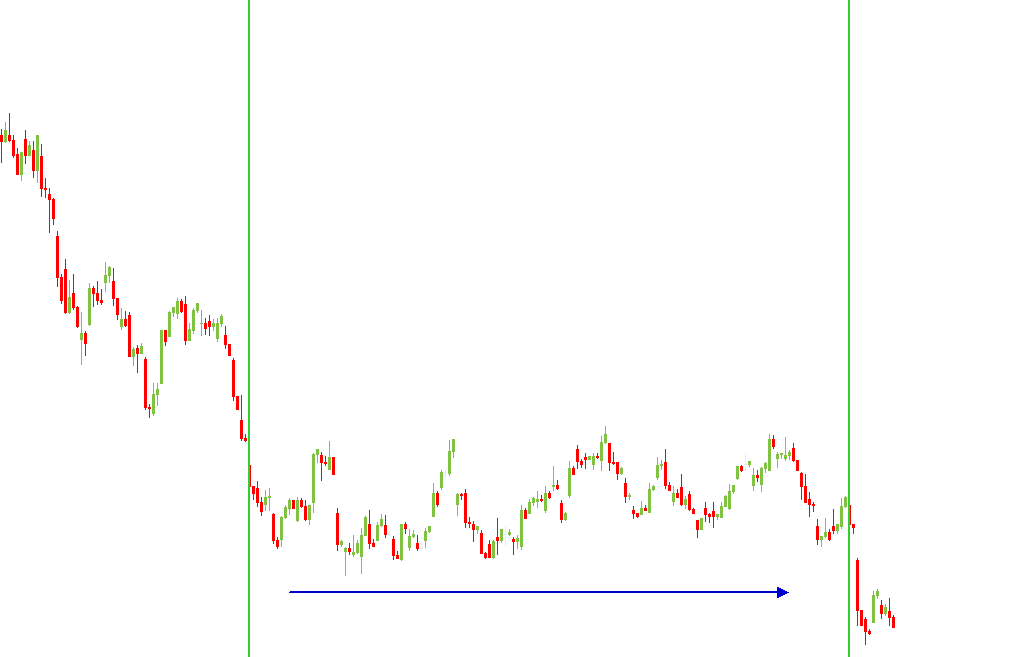La tendenza
Le informazioni non possono essere considerate consigli di investimento
Una delle idee dell’analisi tecnica è che il prezzo si evolve in base alle tendenze. Scopriamo di più su di esse.Una tendenza è la direzione generale del prezzo di un asset sul mercato. Se guardi il grafico di uno strumento finanziario, vedrai che i prezzi non si muovono mai in linea retta, ma sono una serie di massimi e minimi. Molto spesso, un prezzo ha una propensione al rialzo o al ribasso.
Ci sono tre tipi di trend:
- Una tendenza al rialzo (rialzista) è formata da una serie massimi maggiori e minimi maggiori (i prezzi salgono). Possiamo parlare di una tendenza rialzista se esiste una chiara linea di supporto che collega almeno due minimi e limita il declino. Una rottura sotto questa linea indica la debolezza o l’inversione della tendenza.

-
Una tendenza al ribasso (ribassista) è una serie di minimi minori e massimi minori (i prezzi calano). Possiamo parlare di tendenza ribassista se esiste una chiara linea di resistenza che collega almeno due massima e limita il rialzo. Una rottura sopra questa linea indica la debolezza o l’inversione della tendenza.

-
Tendenza in fase laterale (piatta, orizzontale) – non c’è nessuna tendenza ben definita né in una direzione né nell’altra.

In termini di durata, le tendenze possono essere classificate in:
- A lungo termine (6 mesi - 2,5 anni): una tendenza importante che può essere seguita su un grafico settimanale o mensile. È formata da diverse tendenze a medio e breve termine, che spesso si muovono contro la tendenza principale.
- A medio termine (1 settimana - un paio di mesi): si osserva meglio su grafici giornalieri e H4.
- A breve termine (meno di una settimana): si osserva meglio su grafici orari e minuti.
Ogni tendenza è formata da movimenti nella direzione di questa tendenza che sono interrotti da movimenti contrari ad essa chiamati “ritracciamenti” o “correzioni”. Una tendenza continua fino a quando non si verifica un’inversione e la direzione della tendenza cambia.Tra i trader si usa dire “La tendenza è tua amica”. L’idea alla base di questo detto è che i trader possono realizzare buoni profitti seguendo una tendenza, ovvero facendo trading nella sua direzione (acquistare durante una tendenza rialzista e vendere durante una tendenza ribassista).Per determinare qual è tendenza presente nel mercato, i trader tracciano linee di tendenza e utilizzano indicatori tecnici.Una linea di tendenza è una linea tracciata attraverso i massimi o i minimi del grafico del prezzo al fine di identificare la direzione dominante del prezzo. Poiché questa linea collega i massimi e i minimi già formati dal prezzo, può essere estesa (proiettata) a destra del prezzo corrente. Si presume che in futuro questa linea sarà un ostacolo per il prezzo.

Nell’immagine qui sopra, puoi vedere la linea di tendenza disegnata attraverso il minimo del prezzo e un minimo maggiore in un trend rialzista. Il prezzo si è mosso sulla linea di tendenza per un po’ di tempo, continuando ad evolversi in una tendenza rialzista. Successivamente, ha attraversato verso il basso la linea di tendenza: ciò indica che la tendenza rialzista è terminata e il mercato si è invertito. I trader che hanno aperto trade di acquisto durante la tendenza rialzista hanno chiuso le loro posizioni e aperto trade di vendita.
Altri articoli in questa sezione
- Timeframe
- Grafico Renko
- Tipi di grafico
- Heiken Ashi
- Allentamento quantitativo
- Pivot Point
- Williams Percent Range (%R)
- Relative Vigor Index
- Momentum
- Force index
- Indicatore Envelopes
- Bulls Power e Bears Power
- Indicatore Average True Range
- Come fare trading sulle decisioni della banca centrale?
- CCI
- Deviazione Standard
- SAR Parabolico
- Stocastico
- Relative Strength Index
- Oscillatori
- ADX
- Bande di Bollinger
- Le medie mobili
- Introduction to technical indicators
- Supporto e resistenza
- Analisi tecnica
- Banca del Giappone
- Banca d'Inghilterra
- Banca Centrale Europea
- Riserva Federale
- Banche centrali: politica ed effetti
- Fattori fondamentali
- Analisi fondamentale
- Analisi fondamentale vs analisi tecnica













